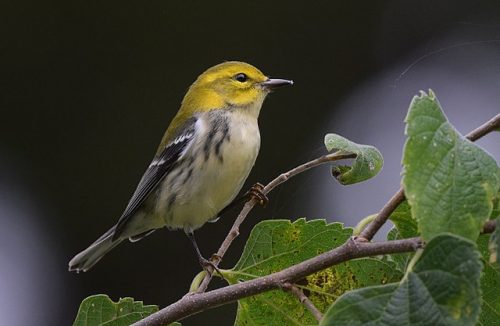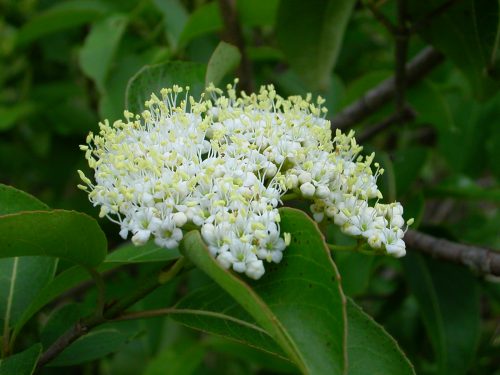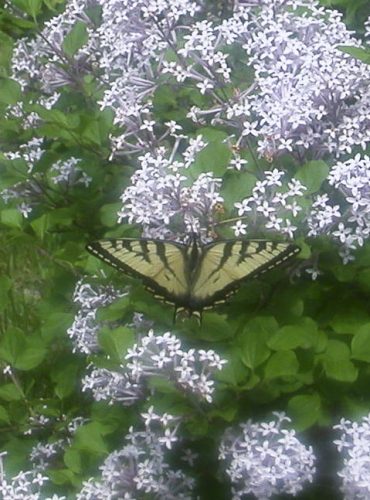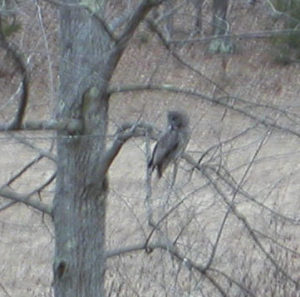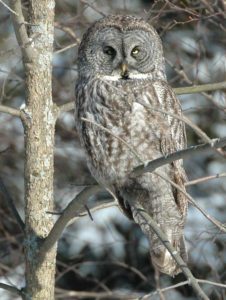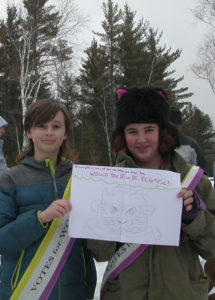 In the mature hardwoods of the Adirondacks, the American Beech reigns supreme. It is a majestic tree, stretching 80 feet or more and providing the dense summer canopy of the forest. The wood of this tree is also dense, and the trunk grows straight, with smooth gray bark. In the fall the golden leaves of the Beech offset the bright red of the many varieties of maple that grow here. While the forests at mid-elevation are described as Beech/Hemlock/Yellow Birch/Sugar Maple forests, it is the Beech that predominates the longer an area of forest is undisturbed.
In the mature hardwoods of the Adirondacks, the American Beech reigns supreme. It is a majestic tree, stretching 80 feet or more and providing the dense summer canopy of the forest. The wood of this tree is also dense, and the trunk grows straight, with smooth gray bark. In the fall the golden leaves of the Beech offset the bright red of the many varieties of maple that grow here. While the forests at mid-elevation are described as Beech/Hemlock/Yellow Birch/Sugar Maple forests, it is the Beech that predominates the longer an area of forest is undisturbed.
Forest animals from Red Squirrels to Black Bears depend on the fruit of the Beech for survival. The tree produces two small triangular nuts encased in burry shells. The Beech fulfills a core sustenance role for wildlife played by the White Oak in warmer climates. Like the Oak, the Beech hangs on to its dry leaves throughout the winter, letting go only when spring arrives and its long spear-like buds emerge. The leaves are large, oval, and pointed, with toothed edges. This is a long-lived tree which bides its time in the shade for many years, shooting up quickly when a patch of sunlight emerges as another tree falls.
Though nature enthusiasts prize this beautiful tree, the lumber industry is equivocal about its merits. The wood makes beautiful furniture and durable blond flooring, but the trees themselves are susceptible to various diseases which are hard to recognize uncut. Beech is less desirable as cordwood because the wood takes a long time to season. Mostly the trees are left alone, which is just as well since they fill such an important ecological niche.
American Beech can be thought of as the North American equivalent of European oaks such as the English Oak. Both belong to the Fagaceae family, and according to Robert Graves much religious symbolism associated with the oak was transferred from the Beech, partly because the Beech is not found in Mediterranean climates. The European Beech is equivalent to the American in many ways: it is long lived, tall, shade tolerant, and produces the seeds that animals love. The American Beech is a bit fussier about its growing environment, though, and the European grows faster, so if you live in a North American city the beech tree in your neighborhood may not be a native one.
In German folklore the souls of children waiting to incarnate hung around beech trees, so women would wander around beeches to conceive. Beech wood could not be allowed near a woman in labor, however, or she would have a more difficult time with the birth.
Beech has a strong association with writing. Beech wood tablets were once used as a writing surface, particularly for runic script. The smooth bark of living beech trees continues to be used for carving.
Beech is considered conducive to divination, and it is a recommended wood for wands. I suppose it’s used for wands, rather than staffs, because it is so dense. I recently acquired a prime piece of American Beech, and I’m surprised every time I pick it up by how heavy it is. I am intending to use it as a staff, but I doubt I’ll be able to carry it too far into the woods.
Further Reading:
Dana, “Sacred Tree Profile: American Beech (Fagus Gradiflora) – Magic, Medicine, And Qualities, The Druid’s Garden, July 6, 2015. https://druidgarden.wordpress.com/tag/beech-tree-mythology/
Chris Dunford, “Beech: The Most Beautiful Tree in the Wood,” Nature Explored Photography http://www.nature-explored.com/beech-info.htm
Stan Tekiela, Trees of New York (Cambridge, MN: Adventure Publications, 2006).



